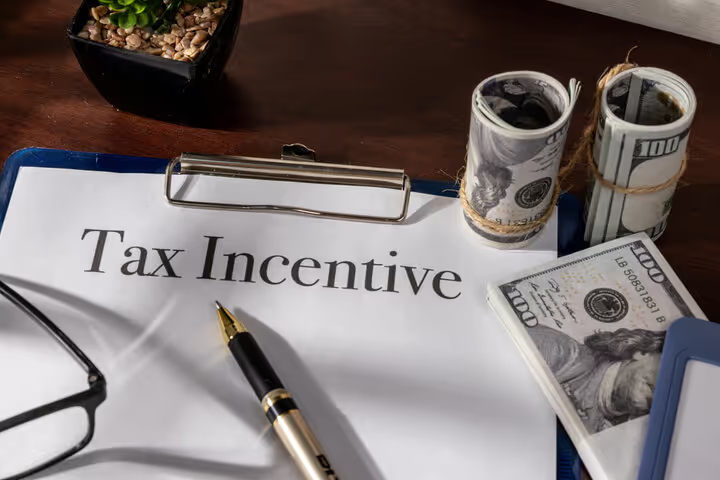Tax Credits and Incentives for Green Home Improvements

Your Guide to Green Home Improvement Tax Credits & Incentives
Considering a new heat pump, high-efficiency furnace, or other major home comfort upgrade? The initial investment can feel substantial, but the sticker price is only part of the financial story. A complex but rewarding landscape of government tax credits and incentives exists to significantly lower your net cost-if you know where to look and how to claim them.
While official government websites like the IRS or Energy Star offer the raw data, their dense language can feel overwhelming. Financial sites simplify it, but often miss the crucial local details. This guide bridges that gap. We've translated the complex rules into a clear, actionable plan for homeowners, helping you make confident decisions and maximize your financial return on creating a greener, more comfortable home.

The Two-Tier System: Stacking Federal and Provincial Incentives
The biggest mistake homeowners make is focusing only on one source of savings. The most significant financial benefits come from stacking incentives-combining broad federal tax credits with more specific provincial, state, or even municipal programs.
Think of it this way:
- Federal Tax Credits: These are designed to lower your overall income tax bill at the end of the year. They are available nationwide but have specific rules and dollar limits.
- Provincial & Local Incentives: These are often upfront rebates or grants offered by provinces like Alberta and British Columbia, or even utility companies, to encourage specific types of upgrades, like installing a cold-climate heat pump.
Successfully navigating both is the key to unlocking maximum savings. We’ll focus on the major federal credits first, then show you how to find local opportunities.
Federal Tax Credits: The Two Big Opportunities for Homeowners
For most homeowners, there are two primary federal tax credits to be aware of, each targeting different types of projects.
The Energy Efficient Home Improvement Credit (Up to $3,200 Annually)
This credit is your go-to for many common energy-saving upgrades. It allows you to claim a credit for 30% of the cost of qualifying improvements, but with specific annual limits. According to the IRS, these limits reset each year, so you can plan projects over time.
The $2,000 credit for heat pumps is often the most valuable part of this incentive for homeowners looking to overhaul their heating and cooling systems.
The Residential Clean Energy Credit (A 30% Investment Return)
If you’re planning a major green energy project, this is the credit for you. It offers a tax credit equal to 30% of the total cost of purchasing and installing new, qualified clean energy systems.
Crucially, as confirmed by IRS guidelines, this credit has no annual maximum or lifetime limit after 2022. This makes it incredibly powerful for larger investments.
Qualifying systems include:
- Solar panels (photovoltaic systems)
- Solar water heaters
- Geothermal heat pumps
- Battery storage technology (when installed with one of the above)
From Theory to Practice: How to Claim Your Credits
Understanding the credits is the first step; properly documenting and claiming them is what turns that knowledge into real savings. The key is meticulous record-keeping.
Your Audit-Proof Documentation Checklist
To protect yourself in case of an audit and ensure a smooth tax filing process, you need to keep a dedicated file for each green home improvement project. Don’t rely on memory-save these documents immediately.
- Product Receipts & Invoices: Must be itemized to show the cost of the product itself, separate from installation labor.
- Installation Contracts: A signed contract from your installer (like Habberjam Mechanical) showing the work performed and dates.
- Manufacturer’s Certification Statement: This is a critical document, often found on the manufacturer's website or with the product packaging. It’s a signed statement certifying that the product qualifies for the specific tax credit.
- Photos of the Project: Before-and-after photos can provide useful context.
- Proof of Primary Residence: The credits are generally for your principal residence, so a utility bill can serve as proof.
A Quick Look at IRS Form 5695
In the U.S., you will use IRS Form 5695, Residential Energy Credits, to claim these benefits when you file your annual tax return. The form is divided into two parts, one for each of the major credits we discussed. Having your documentation organized makes filling out this form straightforward.
Spotlight on Local Savings: Incentives in Alberta and British Columbia
This is where you can truly amplify your savings. As a company serving Edmonton and Kelowna, we know the importance of local programs. While federal credits are consistent, provincial incentives change more frequently.
Homeowners in Alberta and British Columbia should actively search for:
- Clean energy grants: Programs that offer upfront cash for installing systems like solar panels or high-efficiency furnaces.
- Municipal top-ups: Cities like Edmonton sometimes offer additional rebates that can be stacked on top of provincial and federal programs.
- Utility provider rebates: Companies like FortisBC or ENMAX often provide their own incentives for customers who upgrade to energy-saving appliances.
The best approach is to check the official provincial government websites and your local utility provider's site before starting any project. Partnering with an experienced local contractor can also provide invaluable insight into the latest available programs.
Looking Ahead: What's Changing for Green Home Incentives
Tax incentives are not static. One significant change noted by the IRS is coming in 2025. To claim a credit, you will need a Qualified Manufacturer Identification Number (QMID) for the product you installed.
This means manufacturers will need to register their qualifying products. As a homeowner, you'll simply need to ensure your installer provides this number on your invoice. This change is designed to make the verification process easier and reduce fraud, but it highlights the importance of working with knowledgeable professionals who stay on top of these evolving requirements. When you are ready to explore your options, [] understanding your HVAC system is the first step toward a smart upgrade.
Frequently Asked Questions About Home Energy Incentives
What’s the difference between a tax credit and a rebate?
A rebate is typically a cash payment you receive shortly after purchasing a product. A tax credit is a dollar-for-dollar reduction of the income tax you owe at the end of the year. A nonrefundable tax credit, like these, can reduce your tax liability to zero, but you won't get any of it back as a cash refund beyond that.
Can I claim these credits for a newly built home?
Generally, no. The credits are intended for improving existing homes. However, the Residential Clean Energy Credit (for solar, geothermal, etc.) may be claimed for new construction.
What if I'm a landlord? Can I claim credits for a rental property?
These specific credits are for your primary residence only. There are different tax deductions and rules available for business or rental properties.
Can I combine a federal tax credit with a rebate from my local utility company?
Yes, in most cases. A local rebate typically reduces your total project cost. You would then calculate your 30% federal credit based on your net cost after the rebate. For example, if a $10,000 heat pump gets a $1,000 local rebate, you would calculate your federal credit based on the remaining $9,000.
Let's Make Your Green Upgrade Happen
Navigating the world of green energy incentives can be as complex as choosing the right home comfort system. But you don't have to do it alone.
Since 1998, Habberjam Mechanical has been committed to providing not just top-tier plumbing, heating, and cooling solutions, but also the expertise to make them affordable and sustainable. Our mission of Opening Doors with Trust means guiding you through every step-from selecting a high-efficiency furnace or heat pump that qualifies for maximum credits to ensuring the installation is documented perfectly for tax time.
If you’re in Edmonton or Kelowna and ready to invest in a more comfortable, energy-efficient home, let’s talk. We can help you identify the right systems that unlock the powerful financial incentives you deserve.
To learn more about our energy-efficient solutions, please visit our heating services page.
Customer Testimonials
Hear from satisfied customers who trust us for reliable HVAC and plumbing service across Edmonton
















Customer Testimonials
Hear from satisfied customers who trust us for reliable HVAC and plumbing service across Wichita.
Service Areas


